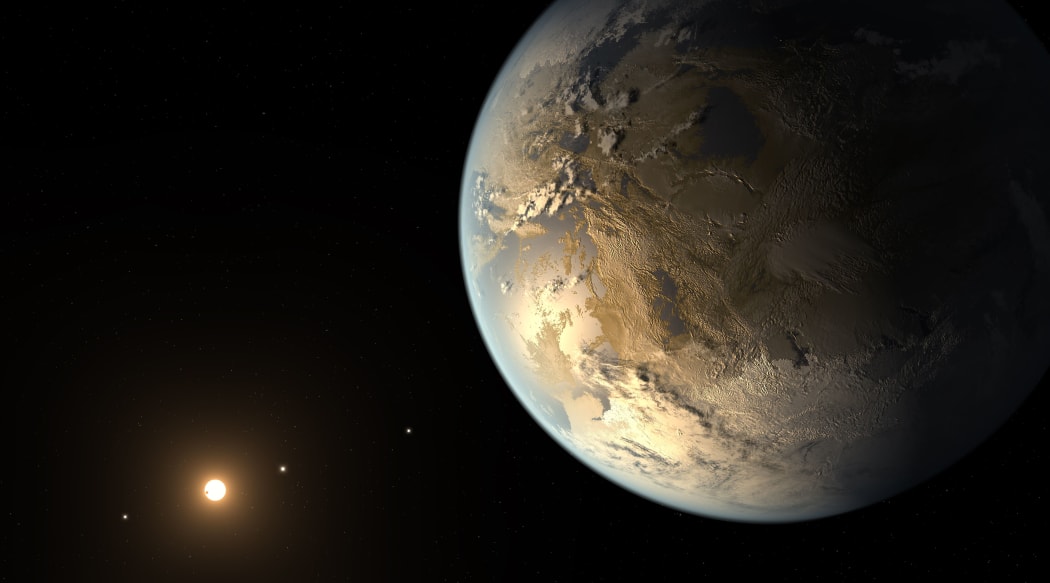Scientists believe a newly discovered rocky planet may be the most Earth-like yet found in another solar system.
Kepler-186f is almost exactly the same size as the Earth and occupies its parent star's "habitable zone" where temperatures are mild enough to allow liquid surface water.

An artist's concept of Kepler-186f. Photo: AFP / NASA / JPL-Caltech / T. Pyle
If the planet has lakes or oceans, it would increase the chances of extraterrestrial life evolving there.
But anything living on the world may have to withstand extra large doses of radiation from its active sun.
The find was described in the journal Science on Thursday as "a landmark on the road to discovering habitable planets".
Kepler-186 is an "M-dwarf" star 795 light years away that is smaller and cooler than the Sun. It is orbited by a family of five known planets - Kepler-186f, the latest to be discovered, is the outermost.
Astronomers using NASA's Kepler space telescope measured very tiny dimming that occurs when a planet crosses or "transits" in front of its star.
The transit information allowed them to calculate the planet's size and estimate its mass and density.
Kepler-186f was found to be just 0.1 times bigger than the Earth.
While habitable zone planets have been identified around other stars, none of them so closely match the Earth in size.
"Some people call these habitable planets, which of course we have no idea if they are,'' said Dr Stephen Kane of San Francisco State University, a member of the Kepler team.
"We simply know that they are in the habitable zone, and that is the best place to start looking for habitable planets.''
The BBC reports Kepler 186f travels around a small and cool star. Of the five planets in the system, its orbit is furthest out and lasts about 130 days.
The Kepler team believes that it has the potential to hold water because with this orbital path it does not journey too close to its star for the liquid to boil away or so far out that it would freeze. Scientists call this region the "habitable zone".

